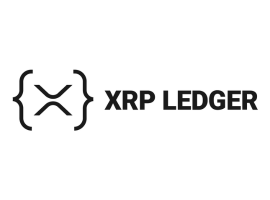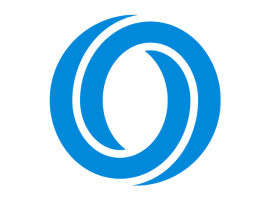
XRP Ledger
The XRP Ledger is an open-source, decentralized public blockchain designed for fast, low-cost payments and tokenization.
Overview
The XRP Ledger (XRPL) is a decentralized, open-source blockchain designed to facilitate fast, low-cost transactions and tokenization. Maintained by a global community of developers, businesses, and validators, XRPL has operated reliably for over a decade with more than 63 million ledger versions processed. It supports a variety of use cases including payments, decentralized finance (DeFi), and asset tokenization. XRPL’s architecture emphasizes high performance, sustainability, and developer-friendly tools, making it suitable for enterprise and public blockchain applications.
Key features include a built-in decentralized exchange (DEX) for peer-to-peer multi-currency trading, atomic cross-currency payments that enable seamless multi-hop transactions across borders, and payment channels for high-speed micropayments secured by XRP. The ledger also supports multi-signing for enhanced account security and flexible token issuance, allowing any currency other than XRP to be represented as tokens on the ledger. Developers can integrate with XRPL using multiple SDKs and APIs in languages such as JavaScript, Python, Java, PHP, and Go, supported by extensive documentation, tutorials, and developer tools.
What sets XRPL apart is its proven reliability with over 10 years of uninterrupted operation, combined with low transaction costs (fractions of a penny) and high throughput. The community-driven governance model and ongoing innovations like smart contract support via WebAssembly-based Hooks and automated market makers (AMMs) further enhance its capabilities. XRPL is widely adopted by financial institutions, DeFi projects, and token issuers seeking a scalable and sustainable blockchain platform. Getting started involves accessing the comprehensive developer portal, using testnet faucets for experimentation, and leveraging the rich set of code samples and APIs to build and deploy applications efficiently.
The Problem
Developers and enterprises face challenges building scalable, low-cost, and fast blockchain applications that support diverse financial use cases like cross-border payments and tokenization. Many blockchains struggle with high fees, slow transaction times, or lack of built-in financial primitives.
The Solution
Key Features
Payment Channels
Enables batched micropayments with unlimited speed secured by XRP.
Multi-Signing
Flexible custody and security options for on-ledger accounts.
Tokenization
Supports issuance and management of tokens representing any currency or asset.
Smart Contract Hooks
WebAssembly-based smart contract functionality currently in public testnet.
Automated Market Makers
Smart contracts for liquidity provision complementing the order-book DEX.
Key Strengths
How Developers Use XRP Ledger
Cross-Border Payments
Financial institutions use XRPL to settle international payments quickly and cost-effectively with atomic multi-currency transactions.
Token Issuance and Management
Tokenization platforms leverage XRPL to create stablecoins, NFTs, and other digital assets with built-in ledger support.
Decentralized Finance Applications
DeFi developers build decentralized exchanges, liquidity pools, and algorithmic trading tools using XRPL’s native DEX and upcoming smart contract features.
Works Well With XRP Ledger
XRP Ledger

Power your next build
Discover trusted tools and services in the QuickNode Marketplace. Everything you need to launch faster and scale smarter.
XRP Ledger Alternatives
Explore web3 competitors and apps like XRP Ledger.

Sunrise DA
Sunrise is a next-generation Layer 1 blockchain combining high-throughput data availability with a native liquidity hub.

Polkadot
Polkadot is a scalable, secure, and resilient Web3 platform enabling developers to build custom blockchains and interoperable applications with shared security and seamless connectivity.

Osmosis
Osmosis is the leading decentralized exchange and DeFi hub built as a sovereign Layer 1 appchain in the Cosmos ecosystem, enabling cross-chain asset swaps and liquidity provision.

Kusama
Kusama is a permissionless, fully sovereign Layer 1 blockchain designed as a fast-moving experimental environment for Web3 innovation and bleeding-edge technology.

Slush (SUI Wallet)
Sui is a next-generation Layer 1 smart contract platform with high throughput, low latency, and an asset-oriented programming model powered by the Move language.

ZetaChain
ZetaChain is a Layer 1 blockchain enabling universal omnichain apps with native access to Bitcoin, Ethereum, Solana, and more.

Injective
Injective is a high-performance Layer 1 blockchain built for Web3 finance, offering low fees, cross-chain interoperability, and scalable infrastructure for DeFi applications.

Oasis
Oasis is a privacy-first, scalable Layer 1 blockchain with a confidential Ethereum Virtual Machine (EVM) enabling confidential smart contracts and verifiable off-chain computation.

Celestia
Celestia is a modular blockchain designed to enable scalable, customizable, and sovereign blockchain deployments with high data throughput.
Pricing
Free | |
|---|---|
| Price (Monthly) | Free |
| Price (Annual) | Free |
| Messaging | N/A |
| Support | Community support via Discord, GitHub, and forums |
| Analytics |
Resources
XRPL.org offers extensive resources including detailed documentation, tutorials, code samples, developer tools, and a learning portal to help developers build on the XRP Ledger efficiently.
